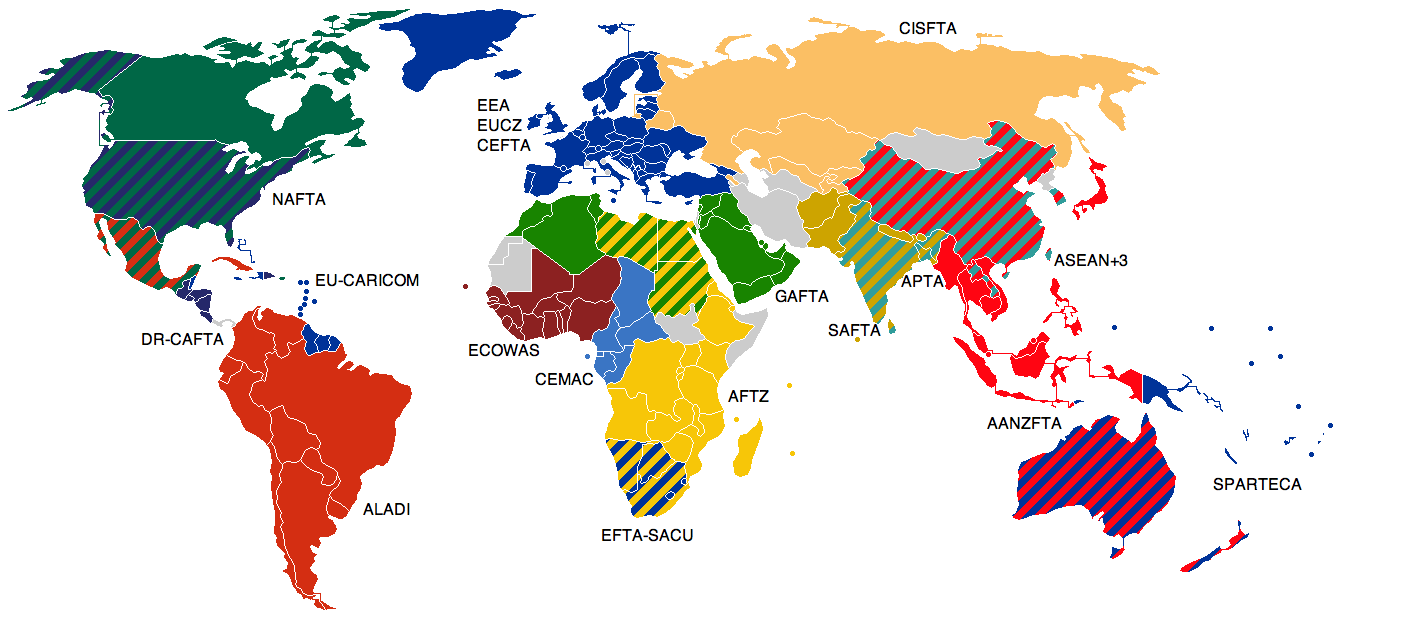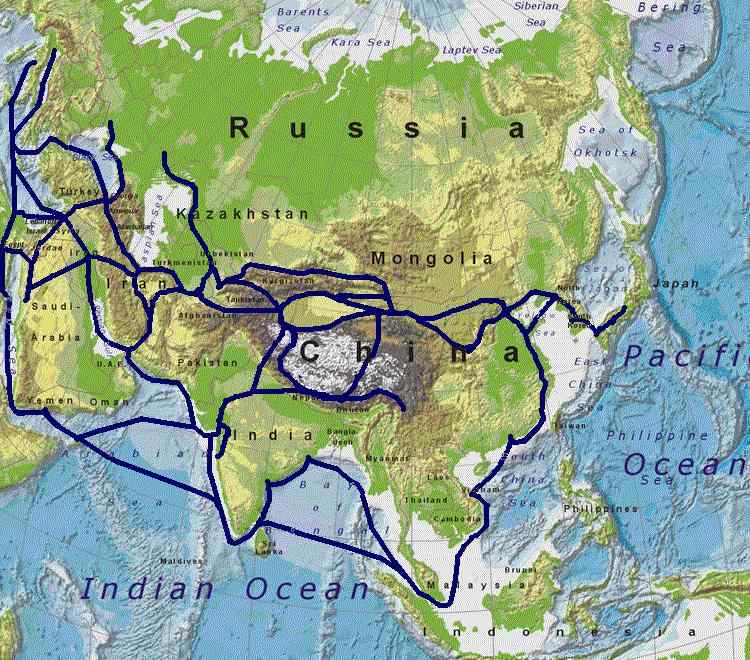|
Australia–Chile Free Trade Agreement
The Australia–Chile Free Trade Agreement (ACLFTA) is a trade agreement between the countries of Chile and Australia. It was signed on July 30, 2008 and went into effect in the 1st quarter of 2009. The agreement was intended to go into effect on January 1, 2009, but was delayed due to Chile not being able to finish its ratification in time. Trade between Chile and Australia is modest, involving A$856m in 2007. Australia is the fourth largest provider of foreign direct investment in Chile with over A$3 billion in 2007. Chile ranks as Australia's 41st trading partner. Australia's main exports to Chile were coal (A$94 million) and civil engineering equipment (A$21 million). Trade from Chile is copper (A$96 million), and pulp and waste paper (A$57 million). When enacted, the Agreement calls for Chile to eliminate tariffs on 91.9% of tariffs which cover 96.9% of trade from Australia. Australia will cut 90.8% of tariffs which cover 97.1% of trade from Chile. By year six of the Agre ... [...More Info...] [...Related Items...] OR: [Wikipedia] [Google] [Baidu] |
Free Trade Agreement
A free trade agreement (FTA) or treaty is an agreement according to international law to form a free-trade area between the cooperating state (polity), states. There are two types of trade agreements: Bilateralism, bilateral and Multilateralism, multilateral. Bilateral trade agreements occur when two countries agree to loosen trade restrictions between the two of them, generally to expand business opportunities. Multilateral trade agreements are agreements among three or more countries, and are the most difficult to negotiate and agree. FTAs, a form of trade pacts, determine the tariffs and duties that countries impose on imports and exports with the goal of reducing or eliminating trade barriers, thus encouraging international trade. Such agreements usually "center on a chapter providing for preferential tariff treatment", but they also often "include clauses on trade facilitation and rule-making in areas such as investment, intellectual property, government procurement, technical ... [...More Info...] [...Related Items...] OR: [Wikipedia] [Google] [Baidu] |
Australia–Chile Relations
Australia and Chile enjoy friendly relations, rooted in a history of Chilean Australians, Chilean immigration to Australia. As of 2016, over 26,000 Chilean-born individuals were living in Australia. Geographically, Chile is the closest country in the Americas to Australia, and both nations administer several islands in the Pacific Ocean, South Pacific. Thy are also members of the Asia-Pacific Economic Cooperation, the Cairns Group, theComprehensive and Progressive Agreement for Trans-Pacific Partnership, and the OECD. Since 2013, representatives from both countries have regularly participated in the annual South Pacific Defense Ministers' Meeting (SPDMM). History As early as the nineteenth century, Australia and Chile maintained informal relations, as Australia was still part of the British Empire. The first known Chilean to arrive in Australia was former president and political exile General Ramón Freire, who arrived in 1838. Australia's third Prime Minister, Chris Watson was ... [...More Info...] [...Related Items...] OR: [Wikipedia] [Google] [Baidu] |
Treaties Entered Into Force In 2009
A treaty is a formal, legally binding written agreement between sovereign states and/or international organizations that is governed by international law. A treaty may also be known as an international agreement, protocol, covenant, convention, pact, or exchange of letters, among other terms; however, only documents that are legally binding on the parties are considered treaties under international law. Treaties may be bilateral (between two countries) or multilateral (involving more than two countries). Treaties are among the earliest manifestations of international relations; the first known example is a border agreement between the Sumerian city-states of Lagash and Umma around 3100 BC. International agreements were used in some form by most major civilizations and became increasingly common and more sophisticated during the early modern era. The early 19th century saw developments in diplomacy, foreign policy, and international law reflected by the widespread use of treat ... [...More Info...] [...Related Items...] OR: [Wikipedia] [Google] [Baidu] |
Free Trade Agreements Of Australia
Australia is party to 18 free trade agreements (FTAs) worldwide covering 30 economies. History Post-War Era (1940s-1960s) Australia was a founding member of the General Agreement on Tariffs and Trade, General Agreement on Tariffs and Trade (GATT) in 1947, which aimed to promote international trade by reducing tariffs and other trade barriers. The focus during this period was primarily on multilateral trade negotiations rather than bilateral agreements. Bilateral Agreements (1980s-1990s) The Australia New Zealand Closer Economic Relations Trade Agreement, Australia-New Zealand Closer Economic Relations Trade Agreement (ANZCERTA), signed in 1983, marked a significant step towards bilateral trade agreements, creating a single economic market between the two nations. The 1990s saw Australia engaging in further bilateral agreements, including those with countries in the Asia-Pacific region. Asia-Pacific Focus (2000s) The Australia-Singapore Free Trade Agreement (ASFTA) was ... [...More Info...] [...Related Items...] OR: [Wikipedia] [Google] [Baidu] |
Free Trade Agreements Of Chile
Free may refer to: Concept * Freedom, the ability to act or change without constraint or restriction * Emancipate, attaining civil and political rights or equality * Free (''gratis''), free of charge * Gratis versus libre, the difference between the two common meanings of the adjective "free". Computing * Free (programming), a function that releases dynamically allocated memory for reuse * Free software, software usable and distributable with few restrictions and no payment *, an emoji in the Enclosed Alphanumeric Supplement block. Mathematics * Free object ** Free abelian group ** Free algebra ** Free group ** Free module ** Free semigroup * Free variable People * Free (surname) * Free (rapper) (born 1968), or Free Marie, American rapper and media personality * Free, a pseudonym for the activist and writer Abbie Hoffman * Free (active 2003–), American musician in the band FreeSol Arts and media Film and television * ''Free'' (film), a 2001 American drame ... [...More Info...] [...Related Items...] OR: [Wikipedia] [Google] [Baidu] |
Tariffs
A tariff or import tax is a duty imposed by a national government, customs territory, or supranational union on imports of goods and is paid by the importer. Exceptionally, an export tax may be levied on exports of goods or raw materials and is paid by the exporter. Besides being a source of revenue, import duties can also be a form of regulation of foreign trade and policy that burden foreign products to encourage or safeguard domestic industry. Protective tariffs are among the most widely used instruments of protectionism, along with import quotas and export quotas and other non-tariff barriers to trade. Tariffs can be fixed (a constant sum per unit of imported goods or a percentage of the price) or variable (the amount varies according to the price). Tariffs on imports are designed to raise the price of imported goods to discourage consumption. The intention is for citizens to buy local products instead, which, according to supporters, would stimulate their country's econom ... [...More Info...] [...Related Items...] OR: [Wikipedia] [Google] [Baidu] |
Free-trade Area
A free trade area is the region encompassing a trade bloc whose member countries have signed a free trade agreement (FTA). Such agreements involve cooperation between at least two countries to reduce trade barriers, import quotas and tariffs, and to increase trade of goods and services with each other. If natural persons are also free to move between the countries, in addition to a free trade agreement, it would also be considered an open border. It can be considered the second stage of economic integration. Customs unions are a special type of free trade area. All such areas have internal arrangements which parties conclude in order to liberalize and facilitate trade among themselves. The crucial difference between customs unions and free trade areas is their approach to third parties. While a customs union requires all parties to establish and maintain identical external tariffs with regard to trade with non-parties, parties to a free trade area are not subject to this requiremen ... [...More Info...] [...Related Items...] OR: [Wikipedia] [Google] [Baidu] |
Market Access
In international trade, market access refers to a company's ability to enter a foreign market by selling its goods and services in another country. Market access is not the same as free trade, because market access is normally subject to conditions or requirements (such as tariffs or Import quota, quotas), whereas under ideal free trade conditions goods and services can circulate across borders without any Trade barrier, barriers to trade. Expanding market access is therefore often a more achievable goal of trade negotiations than achieving free trade. Market access concessions and limitations to market access differ greatly between trade in goods and trade in services. While market access for goods mainly involves measures at the border such as customs duties or quantitative restrictions, market access for services relates more to the application of domestic regulation behind the border. Moreover, in a world of proliferating regionalism, preferential market access for goods and se ... [...More Info...] [...Related Items...] OR: [Wikipedia] [Google] [Baidu] |
Closer Economic Relations
The Australia–New Zealand Closer Economic Relations Trade Agreement, commonly known as Closer Economic Relations (CER), is a free trade agreement between Australia and New Zealand. It came into force on 1 January 1983, but the actual treaty was not signed until 28 March 1983 by the Deputy Prime Minister of Australia and Minister for Trade, Lionel Bowen and the New Zealand High Commissioner to Australia, Laurie Francis in Canberra, Australia. This was because Malcolm Fraser and Robert Muldoon hated each other personally to such an extent that they refused to ratify the agreement if the other was there. Overview CER built on the earlier New Zealand Australia Free Trade Agreement (NAFTA), which was signed on 31 August 1965 and came into force on 1 January 1966. NAFTA had removed four-fifths of the tariffs between the two countries and quantitative restrictions on trade across the Tasman Sea. However, it came to be seen as too complex and bureaucratic, and in March 1980, a j ... [...More Info...] [...Related Items...] OR: [Wikipedia] [Google] [Baidu] |



